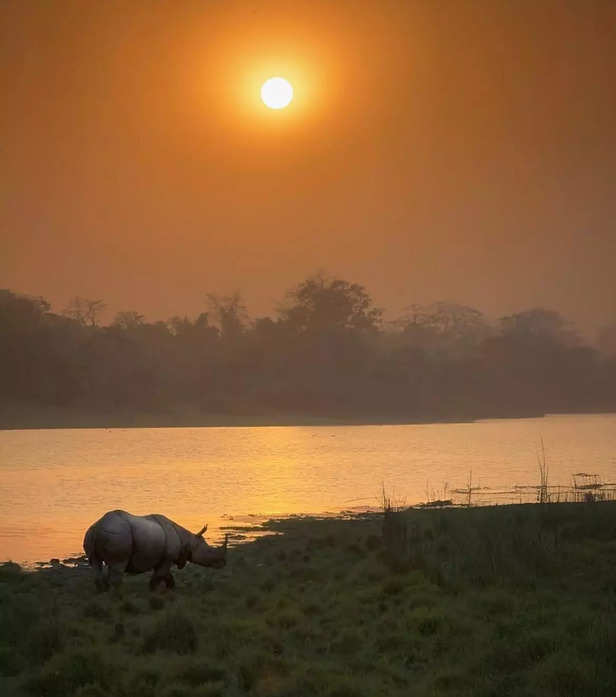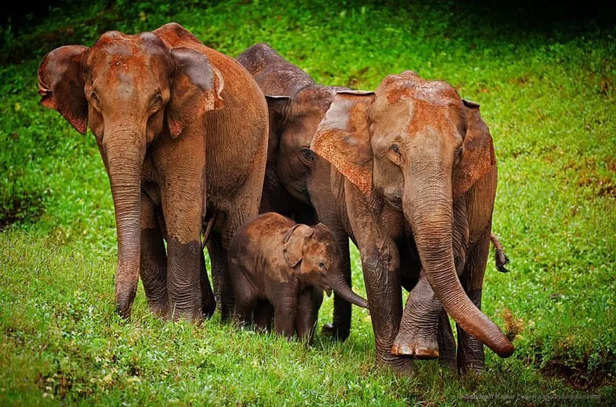India’s Wild Side: 5 Safaris That Will Make You Forget the Concrete Jungle
Ankita Rai | Wed, 05 Mar 2025
India’s wildlife reserves are more than just scenic retreats—they are battlegrounds where conservation, politics, and tourism collide. From the majestic tigers of Jim Corbett to the endangered rhinos of Kaziranga, these sanctuaries struggle for survival amid government policies, poaching threats, and public interest. Explore how these natural havens balance protection and tourism while fighting for their future.
( Image credit : MyLifeXP )
Photo:
In the high-tech, fast-paced life of the present times, there is a real need to turn off and reconnect with nature every now and then. Wildlife sanctuary visits provide a unique chance to be close to nature and personal, cementing our learning and understanding of biodiversity and conservation activities. Field trips not only give us a break from urban life but learn and inspire us to preserve the world's irreplaceable ecosystems.
While stressing on the need for such trips, Prime Minister Narendra Modi has recently gone to Kaziranga National Park in Assam. For the duration of his travel, he went for an elephant safari, while stressing on his interest in safeguarding wildlife and producing eco-tourism in the nation. His action puts India's natural wealth under the limelight and encourages other Indians to visit and pay obeisance to these havens.
For the interested traveler looking to embark on an India wildlife safari, the following are five of the best destinations to do so for an experience like no other:

Located in the Sawai Madhopur district, Ranthambore is one of India's top national parks. It had initially been used by the local kingdom as a royal hunting lodge before it was reconfigured into a large wildlife sanctuary for Bengal tigers. Tourists have a good chance of spotting the majestic animals in their natural environment. The park is also home to the ancient Ranthambore Fort, a UNESCO World Heritage site, adding a cultural touch to the tour. October to June is the best time to visit, and tiger sightings are more common during the hot summer months of April and May.

Established in 1936, the Jim Corbett National Park is India's oldest and a significant part of the Project Tiger scheme. Situated at the foot of the Himalayas, the park offers diversity of landscapes ranging from grasslands to riverine belts. The park boasts a good mix of wildlife including elephants, leopards, and over 600 species of birds, and therefore a bird watcher's paradise. The ideal time to visit is between November and February when the climate is good, and access to most of the zones is available.

It is one of the UNESCO World Heritage sites and famous for its single-horned rhinoceros, which finds shelter there almost two-thirds of the globe's rhinoceros. Wetland, grassland, and park forest have high biological diversity with tigers, elephants, and diversified bird life. Jeep and elephant safaris bring the wildlife closer. It should be visited during November to April, not the monsoon seasons when floods become common.

Situated in the Nilgiri Biosphere Reserve, Bandipur National Park is a destination popular for the conservation of tiger and elephant. Having been once used as a hunting reserve of the Mysore Maharajas, the park nowadays gives sanctuary to a variety of flora and fauna. The open forest cover of the park boosts the likelihood of spotting wild life, like gaur, chital, and other birds. October to March is the best time to visit, with the post-monsoon period replenishing the flora in the park.

Situates in the middle of the Western Ghats, Periyar Wildlife Sanctuary is famous for its beauty and artificial lake. Boat ride by the lake side is a facility where one has the chance of witnessing elephants, wild boar, and some birds. There is also the option of trekking and bamboo rafting inside the sanctuary for the adventure sport-lovers. One can visit the sanctuary during all seasons of the year, but the preferable season is between October and June.
Taking a safari of wildlife in these parks not only brings us in touch with nature but also benefits the conservation of natural resources as well as that of local people. These trips remind us about the fragile tapestry of life that we are connected to every living thing and about our task of protecting those natural resources so that they benefit future generations too.
While stressing on the need for such trips, Prime Minister Narendra Modi has recently gone to Kaziranga National Park in Assam. For the duration of his travel, he went for an elephant safari, while stressing on his interest in safeguarding wildlife and producing eco-tourism in the nation. His action puts India's natural wealth under the limelight and encourages other Indians to visit and pay obeisance to these havens.
For the interested traveler looking to embark on an India wildlife safari, the following are five of the best destinations to do so for an experience like no other:
1. Ranthambore National Park, Rajasthan

(Picture credit: Instagram)
( Image credit : MyLifeXP )
Located in the Sawai Madhopur district, Ranthambore is one of India's top national parks. It had initially been used by the local kingdom as a royal hunting lodge before it was reconfigured into a large wildlife sanctuary for Bengal tigers. Tourists have a good chance of spotting the majestic animals in their natural environment. The park is also home to the ancient Ranthambore Fort, a UNESCO World Heritage site, adding a cultural touch to the tour. October to June is the best time to visit, and tiger sightings are more common during the hot summer months of April and May.
2. Jim Corbett National Park, Uttarakhand

(Picture credit: Instagram)
( Image credit : MyLifeXP )
Established in 1936, the Jim Corbett National Park is India's oldest and a significant part of the Project Tiger scheme. Situated at the foot of the Himalayas, the park offers diversity of landscapes ranging from grasslands to riverine belts. The park boasts a good mix of wildlife including elephants, leopards, and over 600 species of birds, and therefore a bird watcher's paradise. The ideal time to visit is between November and February when the climate is good, and access to most of the zones is available.
3. Kaziranga National Park, Assam

(Picture credit: Instagram)
( Image credit : MyLifeXP )
It is one of the UNESCO World Heritage sites and famous for its single-horned rhinoceros, which finds shelter there almost two-thirds of the globe's rhinoceros. Wetland, grassland, and park forest have high biological diversity with tigers, elephants, and diversified bird life. Jeep and elephant safaris bring the wildlife closer. It should be visited during November to April, not the monsoon seasons when floods become common.
4. Bandipur National Park, Karnataka

(Picture credit: Instagram)
( Image credit : MyLifeXP )
Situated in the Nilgiri Biosphere Reserve, Bandipur National Park is a destination popular for the conservation of tiger and elephant. Having been once used as a hunting reserve of the Mysore Maharajas, the park nowadays gives sanctuary to a variety of flora and fauna. The open forest cover of the park boosts the likelihood of spotting wild life, like gaur, chital, and other birds. October to March is the best time to visit, with the post-monsoon period replenishing the flora in the park.
5. Periyar Wildlife Sanctuary, Kerala

(Picture credit: Instagram)
( Image credit : MyLifeXP )
Situates in the middle of the Western Ghats, Periyar Wildlife Sanctuary is famous for its beauty and artificial lake. Boat ride by the lake side is a facility where one has the chance of witnessing elephants, wild boar, and some birds. There is also the option of trekking and bamboo rafting inside the sanctuary for the adventure sport-lovers. One can visit the sanctuary during all seasons of the year, but the preferable season is between October and June.
Taking a safari of wildlife in these parks not only brings us in touch with nature but also benefits the conservation of natural resources as well as that of local people. These trips remind us about the fragile tapestry of life that we are connected to every living thing and about our task of protecting those natural resources so that they benefit future generations too.










